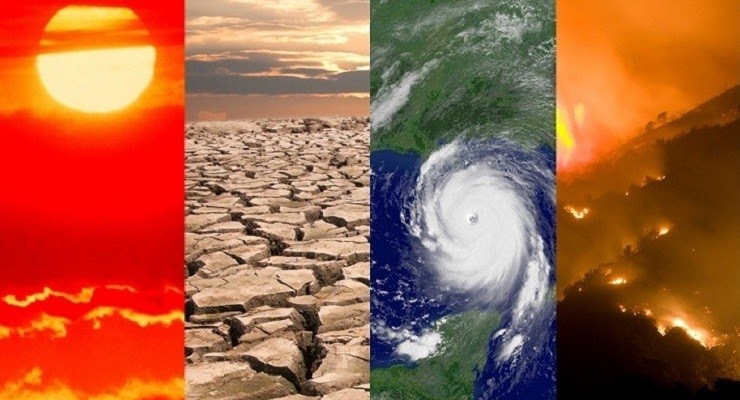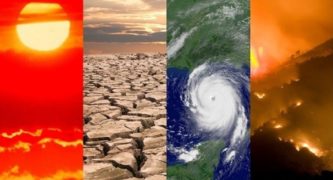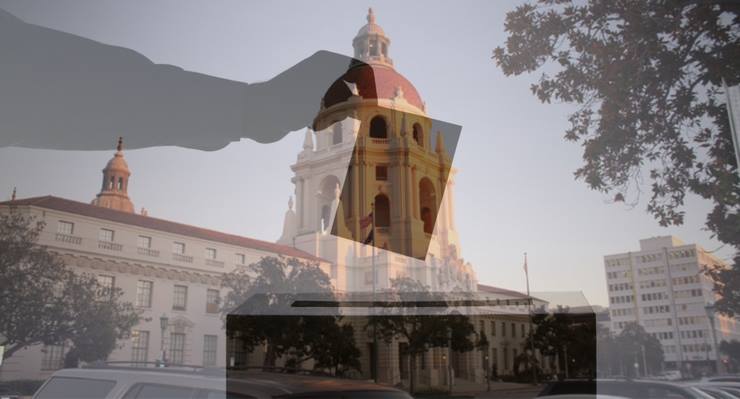
Earth just experienced its hottest September in the roughly 150 years since reliable records have been kept, and Jet Propulsion Laboratory climate scientists say the trend will only continue into the coming years and decades.
The global heat wave was felt in Pasadena, which saw a high temperature of 114 degrees on Sept. 6, breaking the all-time record for the day. The same day, Woodland Hills set the record for the highest temperature ever recorded at a Los Angeles County weather station at 121 degrees.
JPL scientists attribute the rising temperatures to the dramatic spike in atmospheric carbon dioxide levels since industrialization, coupled with the “urban heat island” effect in more highly developed and densely populated areas, like Southern California.
And while widespread efforts to reduce humankind’s carbon emissions continue, “It’s really unlikely we’ll go back to normal,” JPL project scientist Eric Fetzer said. “It’s just basic physics. By adding carbon dioxide and other greenhouse gasses, it tilts the balance toward a warmer Earth… not only the atmosphere, but also the oceans, the ice caps are warmer. We’re going to end up living in a warmer world and we have been, for the last basically 8,000 years since the end of the last ice age.”
Even if humans stopped producing carbon dioxide instantly, “this is going to play out over literally a century,” he said.
“It will take a century for the climate system to adjust. The climate plays out over, basically, a human generation or more. Even an abrupt change in our lifestyle — if one could wave a magic wand — we’d still have significant changes in the climate.”
The increasing temperatures have been most pronounced at higher latitudes, such as the arctic, Siberia and Alaska, according to Fetzer.
In Southern California, including Pasadena, another significant factor has been driving temperature up: A phenomenon known by scientists as the “urban heat island” effect.
Widespread development and installation of asphalt tends to trap heat that would otherwise be dissipated, leading to increased daytime temperatures that provide little relief overnight, Fetzer said.
While the increasing temperatures locally are unpleasant and can be potentially dangerous, Fetzer said his bigger concern was the effect the rising temperatures would have on California’s water supply. The changing climate could lead to changing rainfall patterns, jeopardizing
“Warm nights are bad enough, but changes in rainfall pattern, that’s a big deal — and changes in snowfall pattern, because we in California and much of the West depend on a snowpack that melts more slowly.”
Retired longtime JPL research scientist Bill Patzert pointed to the same two factors of global warming and the urban heat island effect as the course of the recent heat.
“Pasadena is one of the oldest cities in California, and for more than a century, we’ve covered it with asphalt, housing developments, shopping centers and freeways. And every day, alright, we’re creating our own heat,” he said.
“Everybody will notice how it doesn’t cool off at night. Not only the days are warmer, but the nights are warmer,” Patzert said. “If you don’t believe that, just look at your Southern California Edison electric bill for the last six months.”
Pasadena’s average temperature has risen by about 5 degrees over the past 140 or so years, Patzert said. He attributed two of those degrees to global warming, and the other three to the urban heat island effect.
He, too, said he expected heat waves in Southern California to only become longer and hotter.
“Essentially, what we saw in September was one long heat wave. We had these high pressure domes that settled in over not only Southern California, but all of California,” Patzert explained.
“The last six months across California have been the warmest that we’ve ever recorded,” Patzert said. “It’s been six months of blistering heat waves and record temperatures across not only Southland, but all up and down California. And of course that really set us up for the fires, because the wildlands, the forest, became extremely desiccated, dried out.”
“So it’s been record-breaking not only in temperatures but also in fires.”
The recent Bobcat Fire was the second-largest recorded in Los Angeles County history, he pointed out.
“It’s been brutal,” he said. “Not only September, but it’s been brutal from late -spring to early fall.”
Hot weather has the potential to cause injury or even death, Patzert said.
A heat wave in Europe in 2003 is blamed for the deaths of tens of thousands of people, he said.
“Heat is more than uncomfortable,” he said. “Heat is a killer. It kills more people than lightning, tornadoes, hurricanes or floods. So heat is dangerous.”














 0 comments
0 comments


